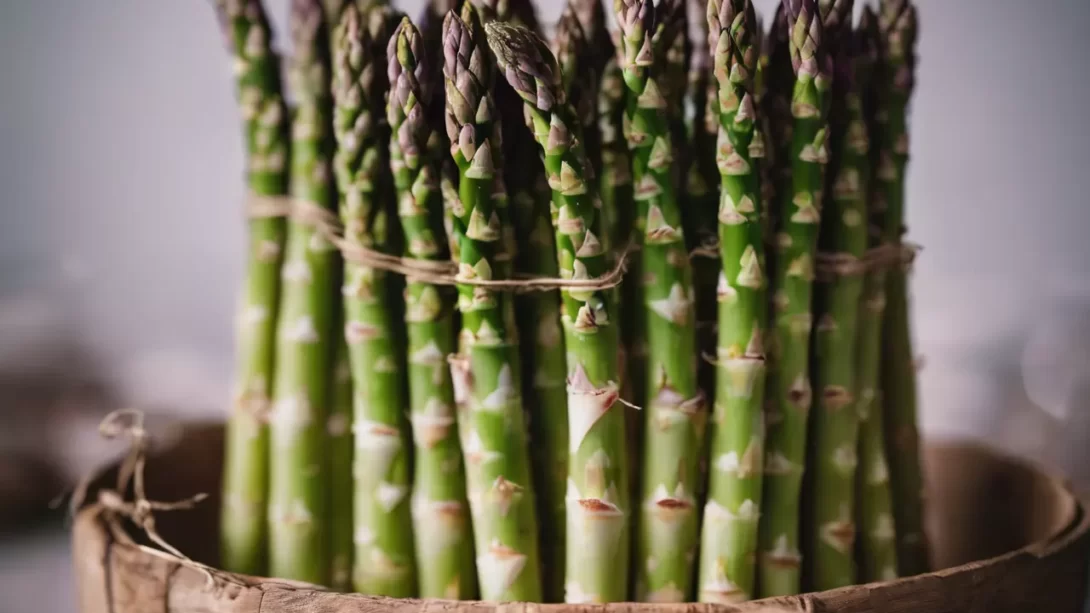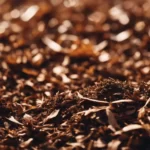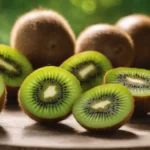Asparagus, a perennial vegetable, is a favorite among gardeners and chefs alike for its unique flavor and nutritional benefits. Understanding its seasonality is crucial for both growing and enjoying this vegetable at its best. In this section, we delve into the varieties of asparagus and the importance of its growing season.
Asparagus officinalis, the most common species, has several varieties that differ slightly in taste, color, and growth habits. Green asparagus is the most widely known, but purple and white varieties, like ‘Purple Passion’ and ‘Blanched Asparagus’, offer unique culinary experiences. Seasonality is particularly significant for asparagus because its flavor and texture are at their peak during a specific time of the year, which varies depending on the climate and region.
The Growth Cycle of Asparagus
Understanding the growth cycle of asparagus is key to appreciating its seasonality. This vegetable has a unique life cycle, starting from a dormant phase during winter. As the soil warms up in spring, spears begin to emerge from the underground crowns. These spears, if not harvested, eventually develop into fern-like foliage, which is essential for the plant to gather energy for the next year’s growth.
The spear emergence phase is when harvesting occurs. This phase typically lasts for about six to eight weeks in spring. After harvesting, the spears left to grow into ferns recharge the plant’s roots, ensuring a bountiful harvest in the following season. This cycle of dormancy, spear growth, and fern development is a delicate balance that dictates not only the best time for harvesting but also the overall health and longevity of the asparagus plant.
Prime Asparagus Season
The prime season for fresh asparagus generally falls in the spring, with April and May being the peak months in many regions. However, the exact timing can vary based on geographical location. In warmer climates, asparagus season can start as early as February, while in cooler northern areas, the season might not begin until May.
Climate plays a significant role in asparagus growth. The plant needs a period of winter dormancy triggered by cold temperatures, followed by a gradual warming in spring to stimulate spear growth. This means that in regions with mild winters or where temperatures rise quickly in spring, the asparagus season might be shorter but start earlier. Conversely, in areas with longer, colder winters, the season starts later but can extend into early summer. The quality of asparagus spears is also influenced by the climate, with temperate conditions generally producing tender, flavorful spears.
Harvesting Asparagus
Harvesting asparagus at the right time is crucial for both the quality of the spears and the health of the plant. Asparagus spears are typically ready for harvest when they are about 6 to 10 inches tall and have firm, closed tips. The ideal harvesting method involves cutting or snapping the spears at ground level. This technique helps prevent damage to the emerging spears and the underground crown.
The harvest period for asparagus can last up to 8 weeks, but for younger plants, it’s recommended to limit the harvest period to 2-3 weeks. This practice ensures that the plant has enough energy to develop a strong root system for future growth. Overharvesting can weaken the plants, leading to reduced yield in subsequent years. Experienced gardeners know to leave a few spears to develop into ferns, which helps the plant photosynthesize and store energy.
Asparagus Off-Season
Once the harvest season ends, asparagus plants enter a phase of growth where they focus on building reserves for the next year. The spears grow into tall, fern-like structures that are crucial for photosynthesis. During this off-season, the plant’s energy is directed towards developing a robust root system and storing nutrients.
Proper care during the off-season is essential for the health of asparagus plants. This includes regular weeding, mulching to retain moisture and regulate soil temperature, and applying balanced fertilizers to replenish nutrients. As winter approaches, the ferns will yellow and die back. This is the time to cut them down to help prevent disease and pest issues. A layer of mulch can be added to protect the crowns during the winter months.
Planning for the next growing season begins in the off-season. This is when gardeners assess the health of their plants, consider expanding their asparagus beds, or replace older plants that are no longer productive. Asparagus plants can produce for 15-20 years, but their yield tends to decrease as they age. Replacing older plants with new crowns can ensure a continuous supply of fresh asparagus each spring.
Storing and Preserving Asparagus
To enjoy asparagus outside its natural growing season, proper storage and preservation are key. Fresh asparagus should be consumed within a few days of harvesting or purchasing. To store, trim the stem ends and place them in a jar or container with an inch of water, much like cut flowers, and refrigerate.
For longer preservation, asparagus can be frozen, pickled, or canned. Freezing is a simple and effective method: blanch the spears in boiling water for a few minutes, plunge them into ice water to stop the cooking process, then drain and freeze. Pickling asparagus is another popular option, often involving a mixture of vinegar, water, and spices. Canning asparagus requires more care to ensure safety, but it can extend the enjoyment of asparagus for months.
Each preservation method has its own impact on the texture and flavor of asparagus, offering different culinary experiences. Frozen asparagus is great for cooking, while pickled asparagus makes a delicious snack or addition to salads. Canned asparagus, though softer, can be used in soups and casseroles.
Conclusion
In conclusion, understanding the seasonality of asparagus is key to growing, harvesting, and enjoying this versatile vegetable at its best. The unique growth cycle of asparagus, with its spring emergence and summer fern development, sets the rhythm for gardeners and chefs alike. Harvesting asparagus at the right time ensures the highest quality spears and maintains the health of the plants for future seasons.
Asparagus’s off-season is not a time of rest but of preparation and care, ensuring the plants are robust and ready for the next harvest. Remember, the longevity and productivity of an asparagus bed greatly depend on the care given throughout the year, not just during the harvest season.
For those who wish to enjoy asparagus beyond its natural season, various preservation methods like freezing, pickling, and canning offer ways to extend its availability. Each method offers a unique way to enjoy asparagus, ensuring that this delightful vegetable can be a part of meals year-round.
Asparagus, with its distinct flavor and nutritional benefits, is a wonderful addition to any garden. Whether you are a seasoned gardener or a beginner, growing asparagus can be a rewarding experience. Its seasonality reminds us of the rhythms of nature and the joys of eating fresh, seasonal produce. So, embrace the asparagus season in your region and enjoy this wonderful vegetable at its peak of flavor.



